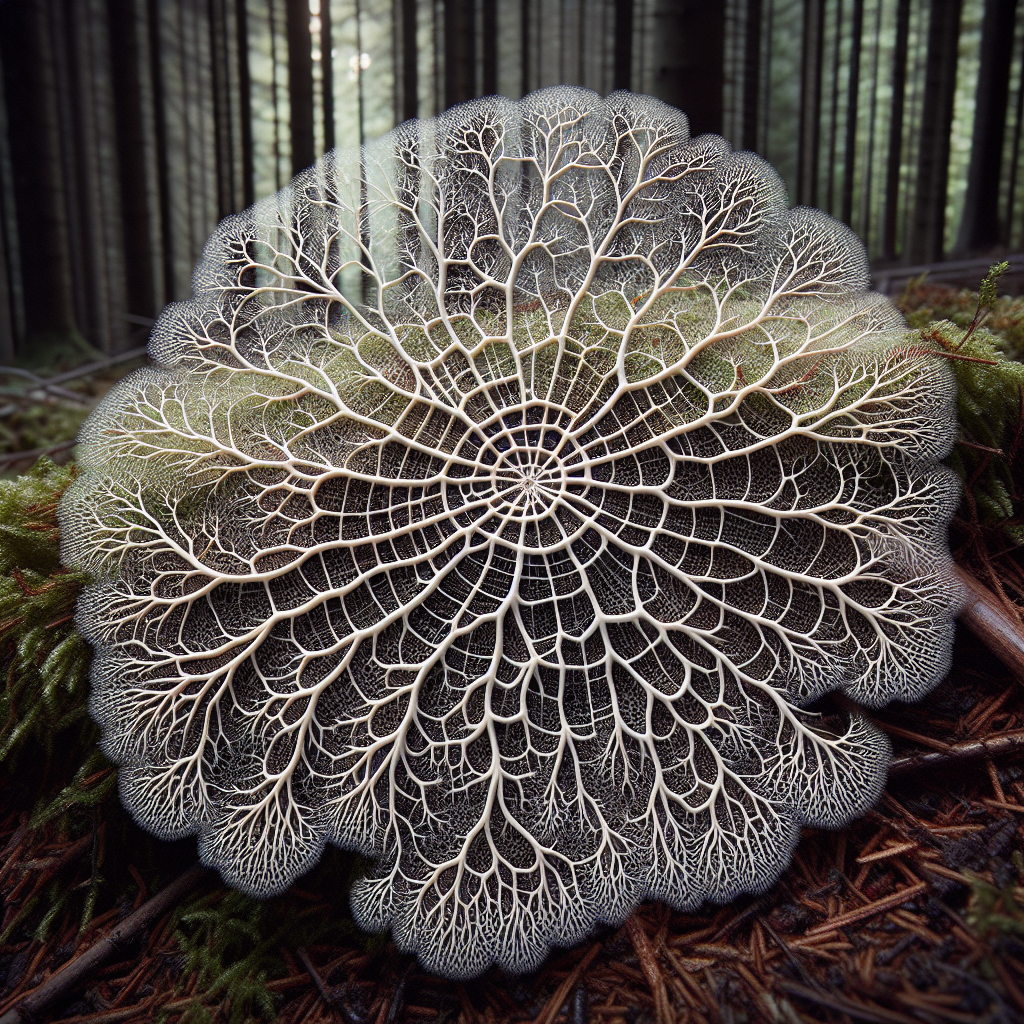In the article “Exploring the Mycelium Network“, you will unearth the intricate yet fascinating world of the mycelium network, the very life force underpinning our world’s forest ecosystems. This immense subterranean web silently dictates the health and prosperity of our planet, demonstrating an unparalleled degree of symbiosis, communication and intelligence. Prepare to challenge your understanding of connection, realizing that the roots of life stretch far beneath your feet, woven in a complex tapestry of innumerable fungal threads, demonstrating nature’s incredible ingenuity. Remember that every step you take is a dance on an ever-evolving stage set by the mycelium network. Get ready to explore this hidden universe and marvel at its profound wisdom, all in “Exploring the Mycelium Network”.

Understanding the Mycelium Network
The Mycelium network represents an intricate system, operating beneath the surface of our planet, that facilitates communication and resource distribution among plant species. It can be seen as a living, breathing, and essential component of Earth’s ecosystem.
Defining mycelium
Mycelium is a network of thread-like structures know as hyphae, which are vegetative parts of fungus. You can think of mycelium as the root-like substructure of fungi, continuously growing and branching out to form a complex web that connects different parts of an ecosystem.
The structure of a mycelium network
The structure of the mycelium network is a vast, decentralized web, similar to the structure of the internet. The hyphae form an intricate latticework that can extend over large areas, reaching out to intertwine with plant roots, and playing a significant role in nutrient delivery and communication among plants.
Role in the ecosystem
Mycelium plays an essential part in the ecosystem as it decomposes dead organic matter, releases nutrients into the soil, and forms symbiotic relationships with plants. These associations support the plant’s nutrition and health, allowing for a healthier and more robust ecosystem.
The Biology of Mycelium
Expanding our understanding of mycelium necessitates delving deeper into its biological characteristics, growth processes, and intricate cellular structures.
The life cycle of mycelium
The life cycle of mycelium begins with the germination of a spore, which grows into a hypha. These hyphae, in turn, mature into a network of mycelia that feed, grow, and eventually produce spore-bearing fruit bodies, completing the cycle.
Cellular structures involved
Mycelium comprises hyphae, which are filamentous cells surrounded by a rigid cell wall. These hyphae have septa or cross walls, creating individual cells within each filament. Each cell contains organelles including nuclei, mitochondria, and vacuoles.
Reproduction and growth of mycelium
Mycelium grows by extending its hyphae and branching off into new directions. This extension and branching process supports the mycelium’s reproductive goal, which is to form fruiting bodies or mushrooms. These fruiting bodies will eventually create and disperse spores, which can germinate to begin the cycle anew.
Mycelium and Fungi: An Intricate Connection
The relationship between mycelium and fungi is intricate and co-dependant. Mycelium serves as an essential component of the life cycle and functioning of many fungi.
How mycelium relates to fungi
Mycelium is essentially the vegetative part of a fungus. It serves as the fungus’ main mode of nutrient absorption, allowing it to grow and thrive.
Mycelium as the vegetative part of a fungus
Just as the roots and leaves of a plant serve to absorb nutrients and facilitate growth, the mycelium serves a similar purpose for fungi. It is the main site for nutrient and water uptake, rendering it critical to the survival and propagation of the fungi.
Different types of fungi and their mycelium
Different types of fungi possess distinctive mycelial structures. For example, some fungi have septate hyphae with cross-walls, while others have coenocytic hyphae, which lack these walls. These various structural differences influence how different fungi interact with their respective environments.
The Role of Mycelium in the Environment
Mycelium’s role in the environment is multifaceted, crossing into nutrient cycling, soil conditioning, and plant health.
Nutrient cycling and decomposition
Mycelium plays a significant role in nutrient cycling, decomposing dead organic matter and thereby releasing nutrients back into the soil. This enables a continual cycle of nutrient replenishment that many ecosystems rely upon.
Mycelium as a soil conditioner
The web-like structure of mycelium helps improve soil structure. Mycelium binds soil particles together, creating aggregates that enhance soil porosity, water retention, and overall soil health.
Role in plant growth and health
Mycelium forms symbiotic relationships with plants, known as mycorrhizal relationships. Here, the mycelium aids in increasing the plant’s nutrient and water uptake, thereby bolstering plant health and stimulating growth.

Mycorrhizal Symbiosis
Understanding mycorrhizal symbiosis, a close association between mycelium and plant roots, is pivotal to understanding the environmental role of mycelium.
Defining mycorrhizae
Mycorrhizae are symbiotic relationships occurring between fungi and plant roots. The term ‘mycorrhiza’ literally translates to ‘fungi root’, illustrating the intimate connection between the two organisms.
Different types of mycorrhizal associations
Mycorrhizal associations commonly occur in two forms: ectomycorrhizas and endomycorrhizas. Ectomycorrhizas involve fungi enveloping the root’s surface, whereas endomycorrhizas involve fungi entering the root cells. Both forms provide benefits to plant health and nutrition.
Benefits of mycorrhizal relationships for plants
Mycorrhizal relationships benefit plants by enhancing nutrient absorption, particularly of phosphorus and nitrogen. They also aid in protecting plants from root pathogens and help in mitigating environmental stresses.
Mycelium in Agriculture
Mycelium technology has potential applications in sustainable agriculture, acting as a biofertilizer and boosting pest management, contributing towards more sustainable farming practices.
Using mycelium in sustainable farming
Mycelium can promote sustainable farming practices, primarily through its role in enhancing soil health and aiding in nutrient cycling. This can reduce dependency on artificial fertilizers, furthering agricultural sustainability.
Mycelium as a biofertilizer
As a biofertilizer, mycelium can enhance the availability of key nutrients in the soil and promote plant health. This natural fertilization method also minimizes the environmental impacts associated with the overuse of chemical fertilizers.
Role in pest management
Mycelium can serve a role in pest management by competing with or directly combating plant pathogens. Furthermore, certain fungi produce compounds with antimicrobial properties, offering potential for natural forms of pest control.
Mycelium in Industry
Mycelium has found uses in various industries, including waste management, biotechnology, and even construction and packaging.
Biotechnological applications of mycelium
Mycelium holds promise in the biotechnology sector for its ability to produce valuable compounds such as enzymes, antibiotics, and organic acids. It also shows potential in the development of biological control agents for pest and disease management.
Mycelium in waste management
Mycelium’s ability to decay organic matter offers potential for its use in waste management. Fungi can decompose various types of waste, thereby helping reduce landfill volume and environmental pollution.
Use of mycelium in construction and packaging industries
Mycelium is being explored as a viable resource in the construction and packaging industry, acting as a natural, eco-friendly alternative to traditional materials. Mycelium-based products are biodegradable and can be grown into various shapes and sizes.
Threats to the Mycelium Network
Despite the versatile potential of mycelium, it faces threats due to human activity and climate change.
Effects of climate change on mycelium
Climate change impacts the functioning and survival of mycelium. Changes in temperature, precipitation, and severe weather events can disturb mycelial growth and development, potentially disrupting nutrient cycles and wider ecosystem functionality.
Impact of human activities on mycelium
Human activities such as deforestation, monoculture farming, and pollution can damage mycelial networks. These practices often disrupt soil health and ecosystem balance, indirectly impacting the function and wellbeing of mycelial networks.
Measures for mycelium conservation
Mycelium conservation can be achieved through sustainable land and resource management practices. Maintaining the health of soil and ecosystems, reducing pollution, and embracing sustainable agricultural practices can all contribute to preserving the mycelium network.
The Future of Mycelium Research
Innovative research surrounding mycelium holds promise for uncovering new possibilities and opportunities in various fields.
Innovative research avenues and potential applications
The potential applications of mycelium are vast and varied, ranging from medicine to space exploration. Innovative research is exploring these potential uses and is continually discovering more about how mycelium interacts with its environment and other organisms.
Emerging trends in mycelium study
An emerging trend in mycelium study is the exploration of its intelligence and decision-making capabilities. Researchers are delving into how mycelium communicates and adapts to various environmental conditions, and how its complex network functions.
Influence of mycelium research on sustainable development
Mycelium research has a profound potential impact on sustainable development. It can foster advances in sustainable agriculture, waste management, green industry, and ecosystem conservation, thus contributing to overall sustainability.
Unraveling the Mysteries of Mycelium
The complexity of mycelium presents unique challenges and opportunities for scientific exploration and interpretation.
The complexity of mycelium network dynamics
The complexity inherent to mycelium network dynamics presents a myriad of research avenue opportunities. Unraveling these dynamics can deepen our understanding of ecosystem functionality and resilience.
Understanding interspecies communication in mycelium
Mycelium serves as a communication network among plant species, unlocking understanding of interspecies communication within mycelium lends insight into community dynamics and collaboration within ecosystems.
Scientific challenges in studying mycelium
The challenges in studying mycelium lie in its very nature. Its extensive, decentralized network, its interaction with various biotic and abiotic factors, and its sensitivity to environmental changes make mycelium a demanding subject of study. However, overcoming these challenges could pave the way for groundbreaking discoveries and advancements.
In summary, the mycelium network represents an intricate and dynamic system that is integral to our planet’s ecosystems. Its multifaceted roles, vast applications, and enigmatic nature make it a fascinating subject of study. Harnessing the power and potential of mycelium could alter future agricultural practices, foster sustainable development, and reveal novel pathways in various fields. As research advances, the mysteries of this underground network will continue to unravel, revealing its integral role in the functioning of life on Earth.
